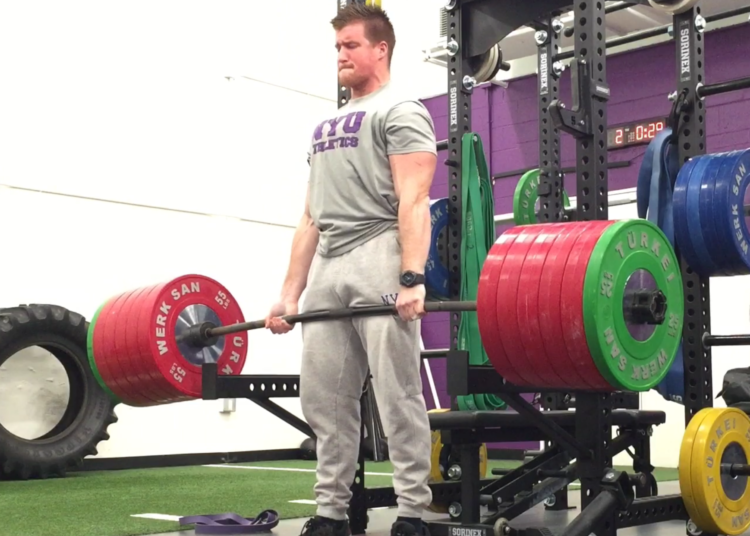For a long time, I deadlifted Sumo and thought deadlifting with a trap bar was cheating. It didn’t matter to me about the benefits of pulling with a trap bar. Even when well-known coaches said it wasn’t cheating, Sumo was still my go-to.
The injuries piled up, I ignored common sense, and kept pulling Sumo. Then a lower back injury combined with acute pain and spasms put me out for 3 months and then I finally made a change.
Now, the trap bar plays a starring role in my training.
Some lifters force feed perfectly good lifts (like me) that are not a good fit. Whether it’s a lack of mobility, injury issues, or genetics, not all lifts are good for all lifters. This doesn’t mean these three exercises are bad. What it does mean is some exercises need to be done less to save you from pain and injury, while still maintaining a training effect. If any of these three lifts are causing you issues, these three great coaches offer suggestions on what you should be doing more of instead.

[Related: 3 things to remember when recovering from lifting injuries]
Less Barbell Deadlifts from Floor / More Rack Pulls
Travis Pollen, PhD, Personal Trainer and Rehabilitation Scientist
Prepare yourself, because what I’m about to say will be considered heresy by many. Here it goes: unless you’re a competitive powerlifter, deadlifts from the floor are overrated.
Don’t get me wrong, if you have good hip mobility, deadlifts from the floor are a great choice. But the truth is, the radius of 45-pound plates is a completely arbitrary height to pull from, and not every lifter has favorable proportions to pull from that height.
Why should someone who’s 6’5” be forced to bend down as far as someone who’s 5’1”?
Many lifters, especially beginners and folks who are especially tall, have a hard time keeping their back flat when they pull from the floor. Granted, a bit of flexion won’t kill you.
When trained wisely, that flexion can even help you lift more weight. For many recreational lifters, the better choice is to reduce the range of motion.
If pulling from the floor doesn’t feel good, do block pulls instead. Block pulls are simply deadlifts where the plates are raised off the floor.
The height of the blocks should be chosen such that you can maintain a flat back in the bottom position. It can even be lowered over time (as you gain more hip mobility) as a form of progressive overload.
Less Overhead Press / More Landmine Press
Chris Cooper, Personal Trainer, Licensed Massage Therapist
While the bench press is the king of horizontal presses, barbell overhead press or military presses takes the crown for vertical presses. Unless you’re one of the few that have won the genetic lottery in terms of shoulder structure as well as mobility, pressing a barbell overhead is overrated.
If you’re a lifter who has the necessary shoulder mobility, thoracic spine mobility, and shoulder structure to handle overhead work, then go for it. If you have a tough time lifting overhead, force feeding this lift will result in bodily compensations and a bigger chance of getting hurt.
There is still a way to overhead press and pack a bar with weight without putting unnecessary strain on the shoulder joint and that’s the tall kneeling landmine press. This takes the legs out of it, making it a more challenging exercise for the upper body. It also takes away lower back and thoracic spine compensation. The angle of the press allows for better shoulder movement.
An added benefit to using the landmine press is it can be done with two hands to mimic a bilateral press like the barbell overhead press or switch it up to a single arm press. As your shoulder mobility and control improve, you can add in a lean at the top of the press to get closer to an overhead position.
Less American Kettlebell Swing / More Russian Kettlebell Swing
Dr. Bo Babenko, DPT
Aside from the fact the American kettlebell swing is one of the commonly butchered moves out there because folks rely too much on their arms. The major focus should be on driving through the legs.
My major gripe with this is a lot of folks don’t have the shoulder mobility for going overhead without compensations. In my Physio practice, I screen all clients with a simple overhead range of motion test and find so many who simply don’t have enough range of motion through their shoulders.
Therefore, without proper screening and personalization, as with almost any exercise, the American kettlebell swing leaves a lot to be desired.
The Russian kettlebell swing only takes the bell to chest height rather than the American overhead swing, The Russian kettlebell swing is a great alternative that emphasizes maximum leg drive and minimum arm engagement.
I cue the arms to simply be guides while the legs do the work. There simply isn’t much benefit to going past your chest for your overall fitness. The American kettlebell swing comes with bigger risk of injury for the shoulders.
Wrapping Up
Whether you agree or disagree with these coaches’ opinions, the alternative exercises suggested here are fantastic if you have mobility or injury issues. Training hard is great, but training hard and smart is the better bet.
Editor’s note: This article is an op-ed. The views expressed herein and in the video are the author’s and don’t necessarily reflect the views of BarBend. Claims, assertions, opinions, and quotes have been sourced exclusively by the author.
Feature image of Mike Dewar.